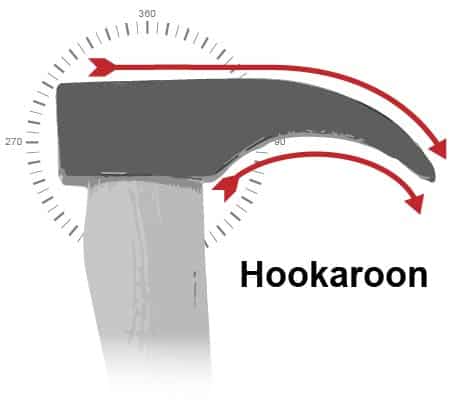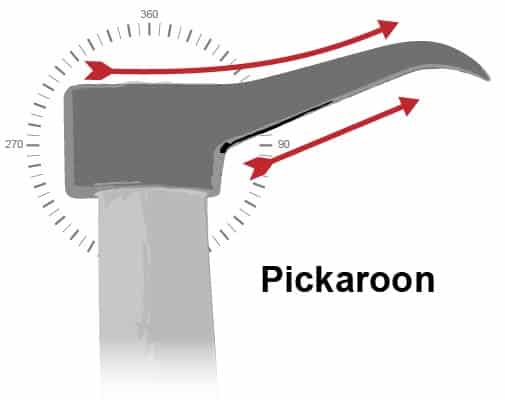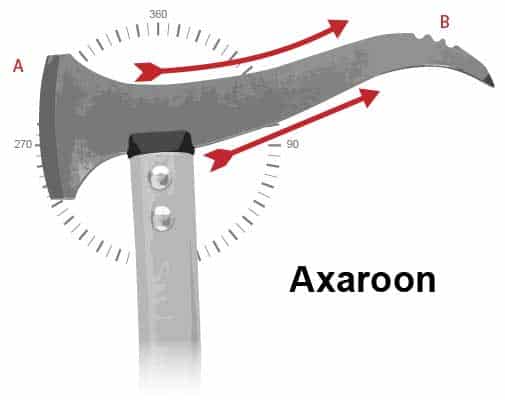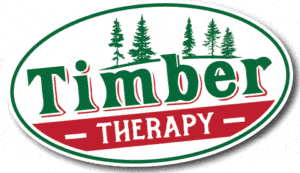The need to move timber from the forest to the factory before the use of heavy machinery in the late twentieth century led to the development of many specialized logging tools. Many of these hand tools have faded into obscurity, but some are still very practical for managing a small forest or woodlot. The hookaroon and pickaroon are two examples of such tools.
What is the difference between a hookaroon and a pickaroon?
How different can a 24” to 36” handle with a perpendicular spike at one end be? To the uninitiated, not much. For those with experience using both tools, there is a nuanced but substantial difference, shaped by centuries of use. Despite being interchangeable terms today, hookaroon and pickaroon both evolved to accomplish very specific tasks.
At first glance, the main difference between a hookaroon and a pickaroon is the shape of the sharp perpendicular spike at the end of the handle. A hookaroon’s point curves back towards the handle to form a slight hook, while the pickaroon’s point is straighter and angled away from the handle. Hence the prefix of the two names, hook and pick.
These two similar tools have evolved to handle logs and wood products under two very different conditions. The hookaroon is a brute, allowing the user to muscle logs and debris, while the pickaroon is precise, allowing the user to move wood with precision and minimum effort.
Hookaroon also known as a “Sappie”

A hookaroon has a weighted head with a tapered spike that curves towards the handle. The handle can be made of wood, metal or composite material and is typically offered in lengths of 28, 32, and 36 inches. A traditional hookaroon uses a friction fit to attach a forged or cast steel head to a wooden handle similar to an ax. Modern versions use a bolt or other fastener to attach the curved spike to the head of an aluminum or composite handle.
The hookaroon was created to help the user move un-bucked logs and other wood products. The long handle and weighted head allows for additional force to be applied when setting the hook. While the curve of the spike allowed for the hooking of logs and snagging other objects without slipping. Additionally, the curvature of the hook provides additional strength and durability to the spike.
Best for moving un-bucked logs and slash out in the woods
The hookaroon’s main advantage is its ability to bite into the wood and stay there. It is well suited for moving large logs and clearing slash and debris from around felled trees.
Pickaroon

A pickaroon consists of a straight spike with an inwardly bent tip mounted perpendicularly or sloping away from the wood, metal, or composite handle. Usually, between 12 and 36 inches in length, the spiked head is traditionally secured to the handle using a friction fit, but modern versions also use mechanical fasteners which make replacing the spike easier.
The picaroon spike the user to move cut logs and other wood products short distances with a flick of the wrist. The tiny bend at the tip bites and releases the wood quickly enabling the user to effortlessly move large quantities of wood with minimum effort. Most often used to move pulpwood and firewood, the picaroon makes quick work of picking up and dropping wood without the need to bend down.
Best for processing, moving, and stacking firewood
The Pickaroon’s main advantage is its ability to easily bite into and release from the wood, making it well suited for picking up, loading, and stacking bucked logs, split firewood, and offcuts.
Hookaroon or Pickaroon, Which is better?
The short answer is both, but if I had to get only one, it would be the pickaroon between 24 and 36 inches so that it can be used with one hand without bending over. Why? The pickaroon is a much more refined tool that is not replicated by any other tool you might have. A hookaroon can be replaced by a cant hook, ax, or winch. There is no substitute for the pickaroon when processing firewood or cleaning up afterward. Nimble, precise, and when mastered, make repetitive tasks a flip of the wrist.
What Style Hookaroon or Pickaroon Should I Get?
Like all hand tools of the twenty-first century the Hookaroon and Pickaroon have undergone many updates and upgrades, but that doesn’t mean they are any better suited for the task.
- Classic designs, with their heads, hung on wood handles are proven, and have fewer moving parts to be concerned with while out in the woods. Handels may break but can be replaced at minimum cost.
- Modern designs have the advantage of hindsight and space-age materials. They are lighter and offer conveniences like replaceable tips, and serrations for gripping and folding spikes.
The style you buy should depend on your specific working conditions. The type of wood and climate plays a big part in choosing the appropriate style. Cold weather and frozen greenwood is going to require a tool with some heft to set the tip, while hot, humid climates and well-seasoned wood will be more forgiving of stainless steel and aluminum tools.
Is There Such A Thing As An Axaroon?
Yes, an axearoon is a pickaroon with an axe blade opposite the pick used for occasional chopping. Modern versions look very similar to ice-climbing axes. Originally designed to reduce the number of tools to be carried into the woods, most are only capable of limited chopping due to their small size and relatively lightweight. A jack of all trades and a master of none so to speak.

